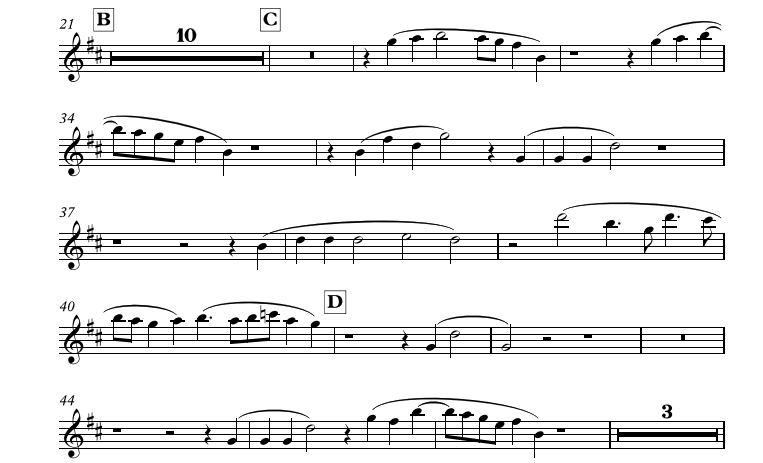Description
This transplantation allocates 24 members of your brass band to the 4 canons as follows, written ranges given:
- 6 cornets (e.g. front row and 3rds)

- 3 cornets (rep and 2nds)
 and 3 trombones
and 3 trombones 
- 4 horns (flugel playing one)
 and 2 baritones
and 2 baritones 
- 2 euphoniums
 , 2 Eb basses
, 2 Eb basses  and 2 Bb basses
and 2 Bb basses 
This presents problems of range, notably for the Bb basses, whose worst moments look like this:

But this is such a marvellous piece of music, and so apt in other ways for the medium, that perhaps it is worth dying for. Indeed, Nietzsche wrote: “I know of no better purpose in life than to perish, prodigal of a great soul, in pursuit of the great and impossible.” On the other hand, if the psalmist is to be believed more than the philosopher, then the Lord may help you through:
He that dwelleth in the secret place of the most High [this surely refers to the high D above] shall abide under the shadow of the Almighty.
I will say of the Lord, He is my refuge and my fortress: my God; in him will I trust.
What to do with the unused soprano cornet and percussionists? Some fool suggests dressing them up as angels, allocating one to each choir as assistant conductors (enabling spatial performance); and equipping each with a megaphone to reproduce the unearthly sibilants of the choral version, rather as the Comedian Harmonists allegedly employed someone to bump the Ds and Ts on their recordings.
This edition is based on the parts published in Clemens Stephani’s anthology, Cantiones Triginta Selectissimæ (Nuremburg, 1568).
Gallery: a reconstruction of the Sistine Chapel as it was when Josquin worked there (i.e. pre-Michelangelo); a portrait of Josquin.





